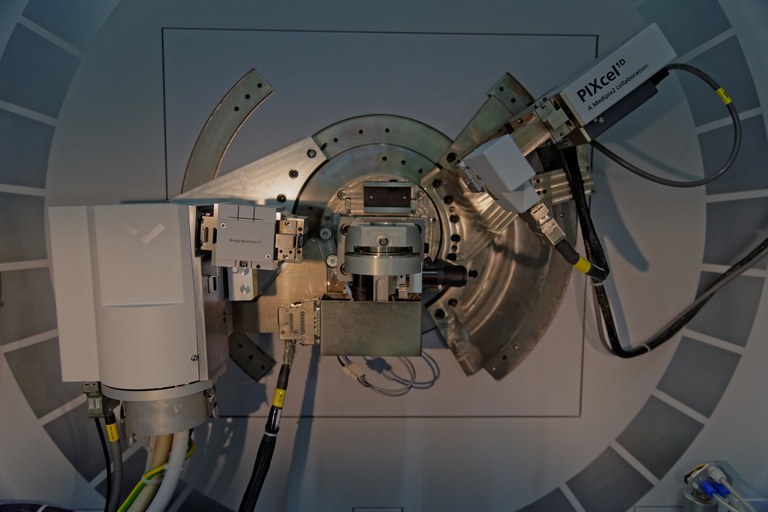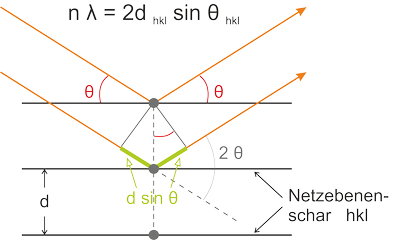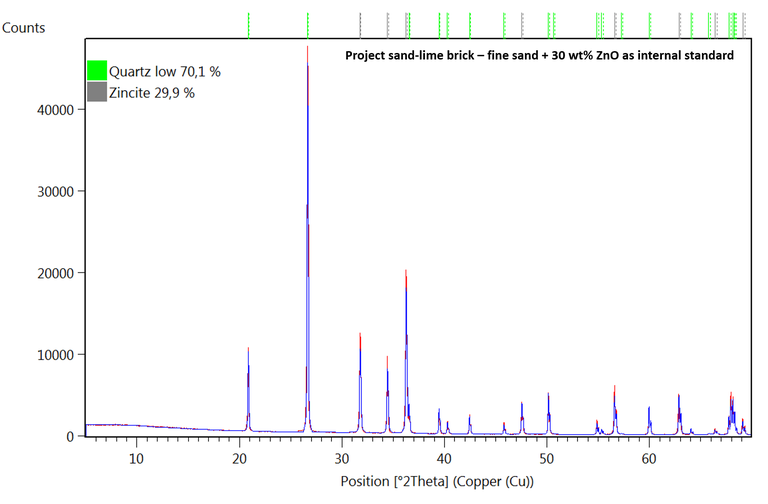The X-ray diffractometer is used for the investigation of crystalline mineral phases present in construction materials such as cement, concrete, sand-lime bricks and many more. Dry powders and tempered samples can be studied in a temperature range from 3 °C to 70 °C. Transient or so-called in-situ measurements observe the alteration of the mineral phase content in the course of a reaction in a sample as for instance in hydrating cement.

Figure: PANalytical Empyrean X-ray platform with copper anode und PiXcel1D Detector
Due to their small wavelength of approximately 10-10 m (1 Å) X-rays are applied for measurements in the atomic dimension in order to determine characteristic periodic structure with dimensions also ranging in the Å-scale. The method is based on the diffraction of monochromatic X-rays on the planes of crystals. The diffracted waves exhibit a path difference and an interference described by Bragg’s law. The incident angle θ is related directly to the spacing d of the lattice planes and thus to the crystalline structure of the mineral phase under investigation. The information obtained permit the quantitative and qualitative analysis of crystalline mineral content of a sample. Rietveld’s method enables the quantitative analysis by fitting a diffractogram based on existing structural data such that it coincides with the measured diffractogram.

Figure: Bragg's law – Condition for constructive interference

Figure: diffractogram of fine sand